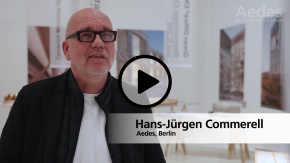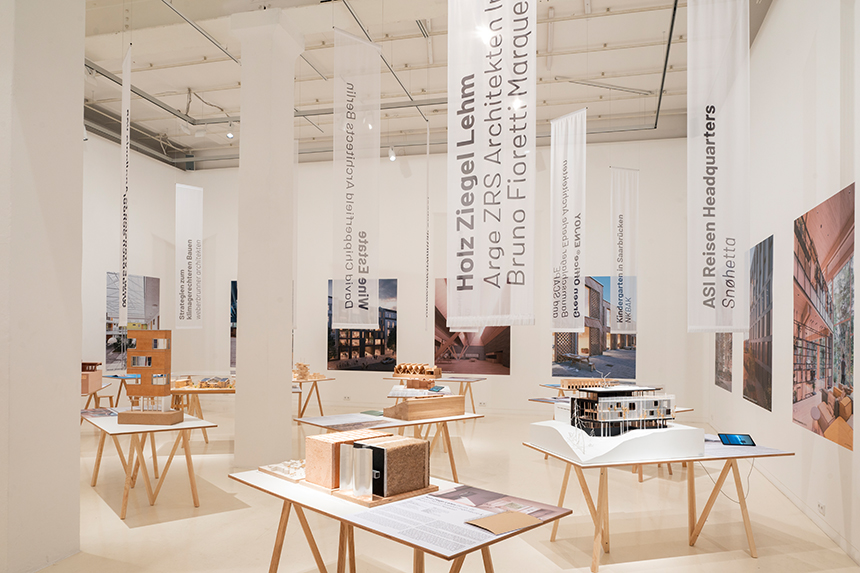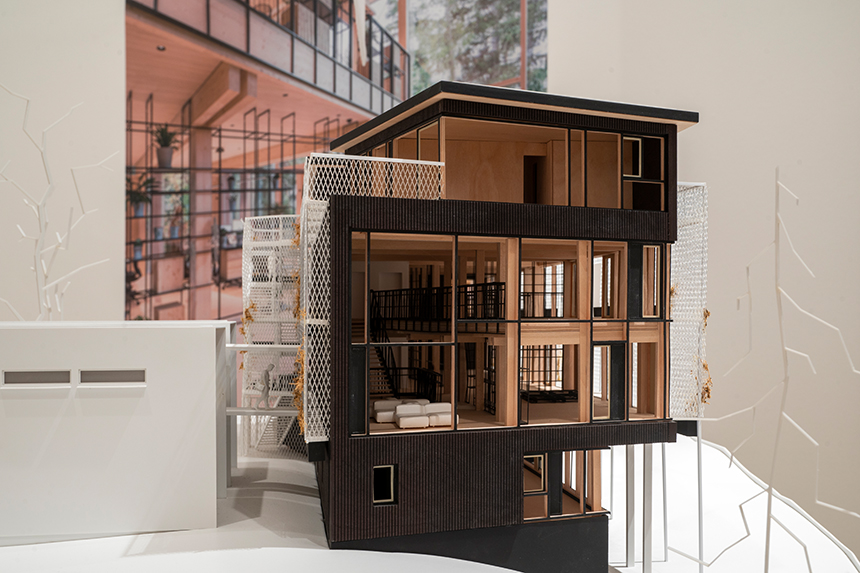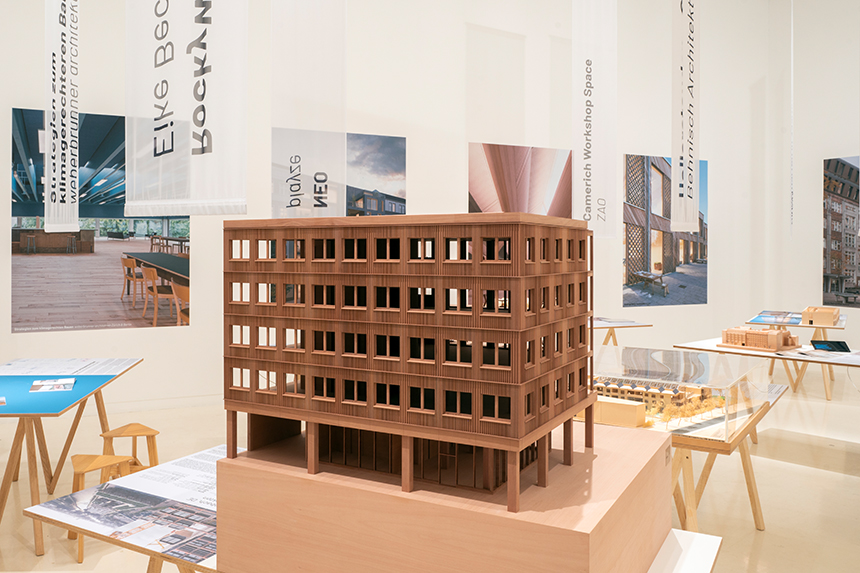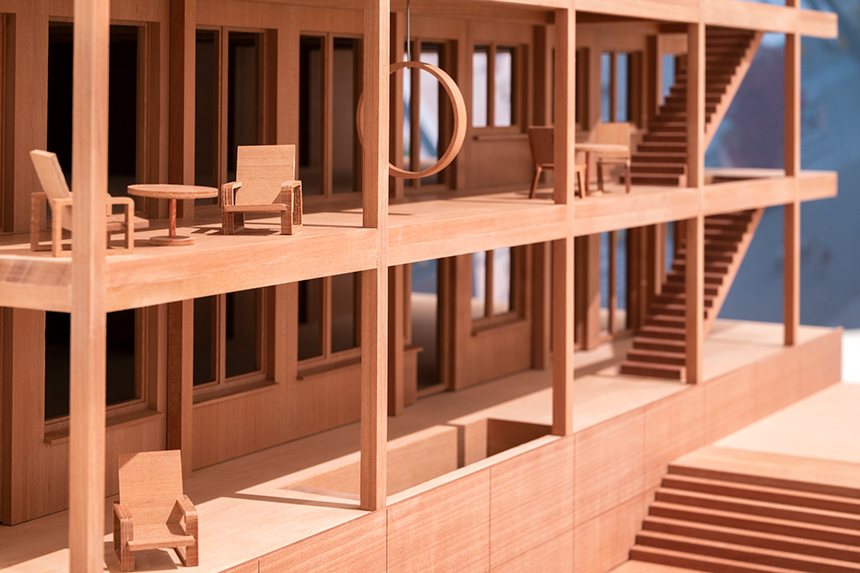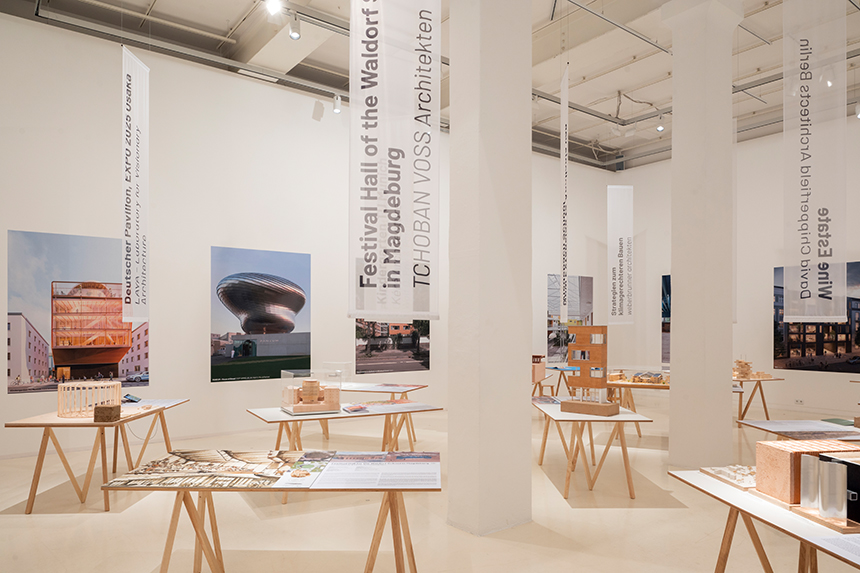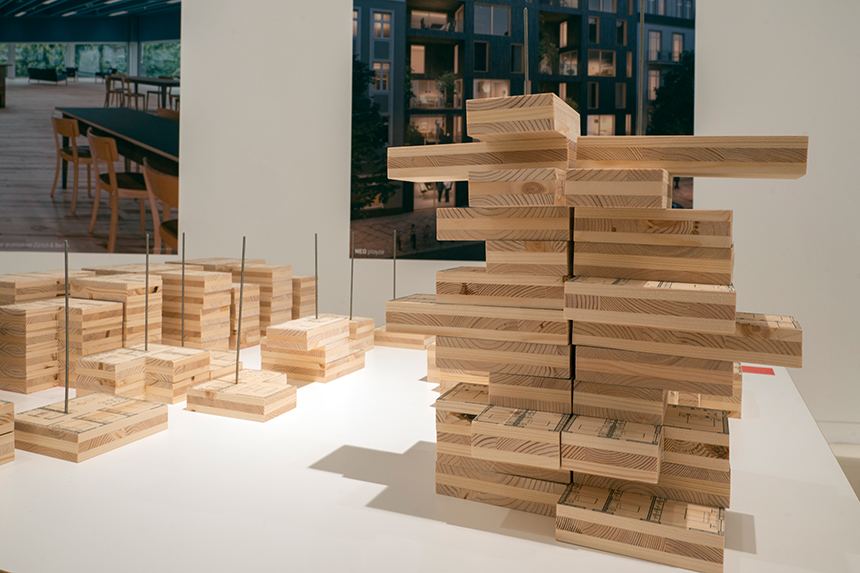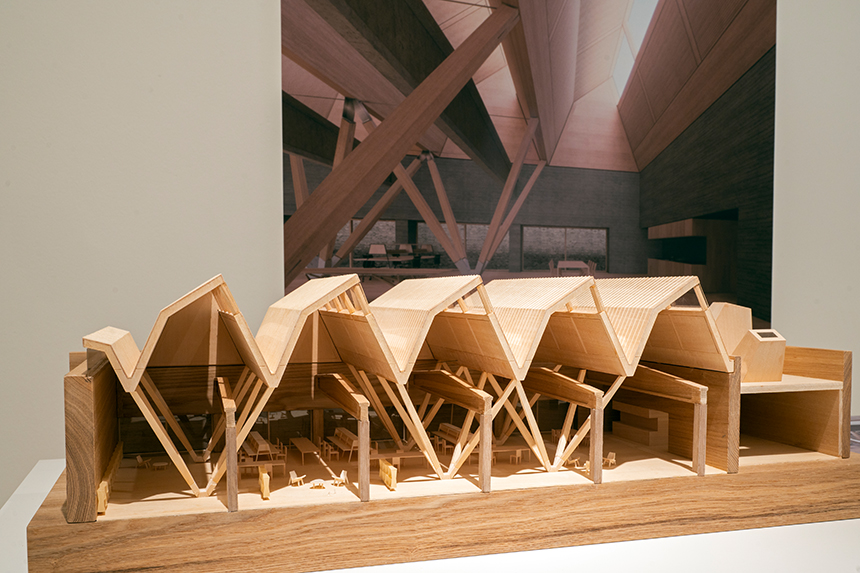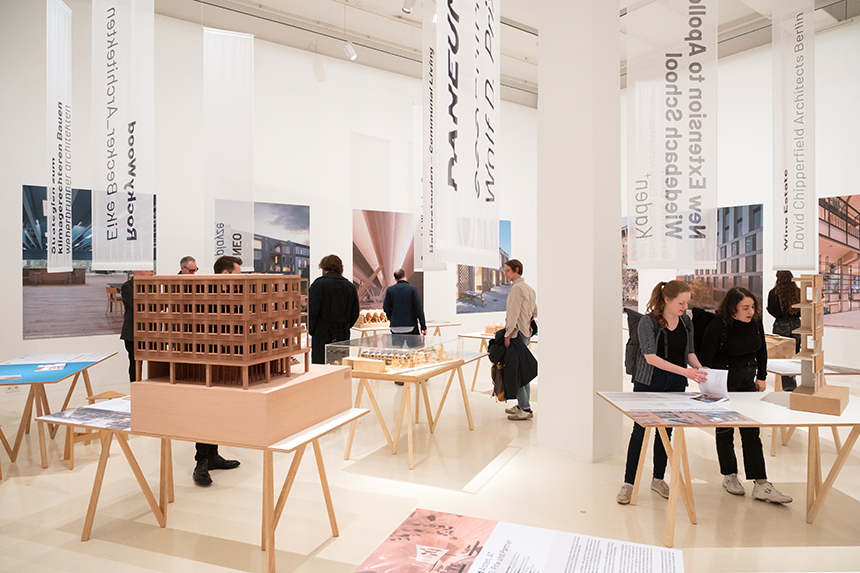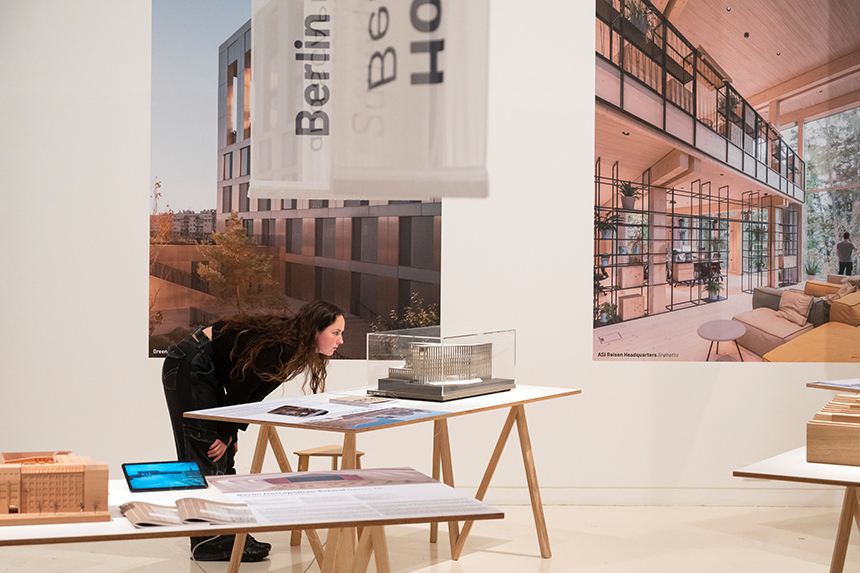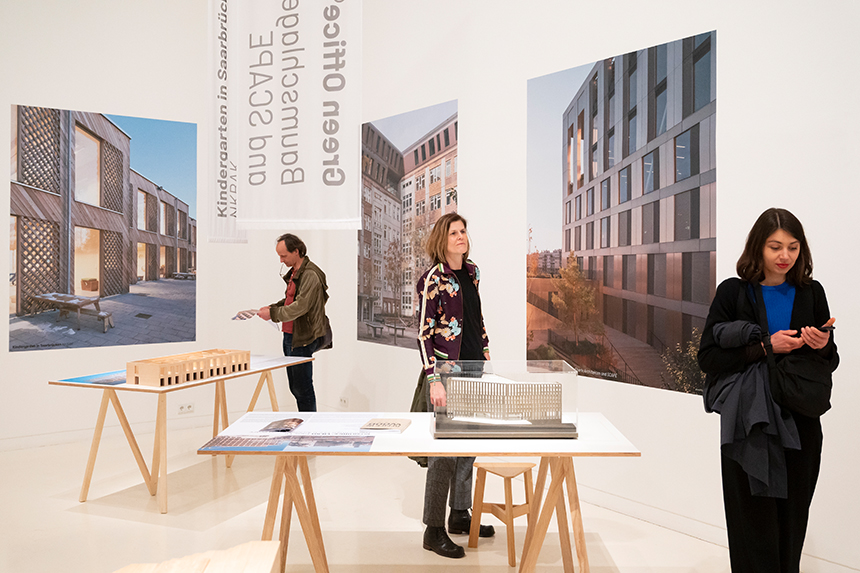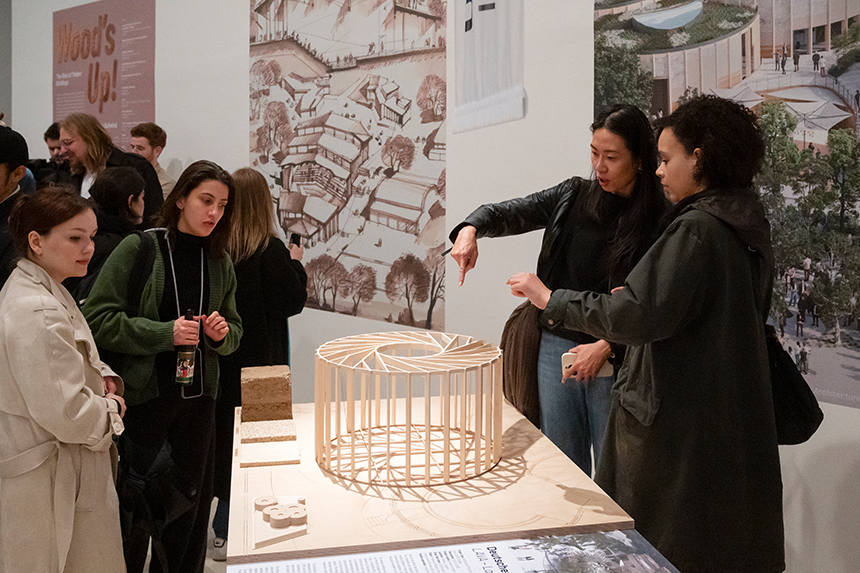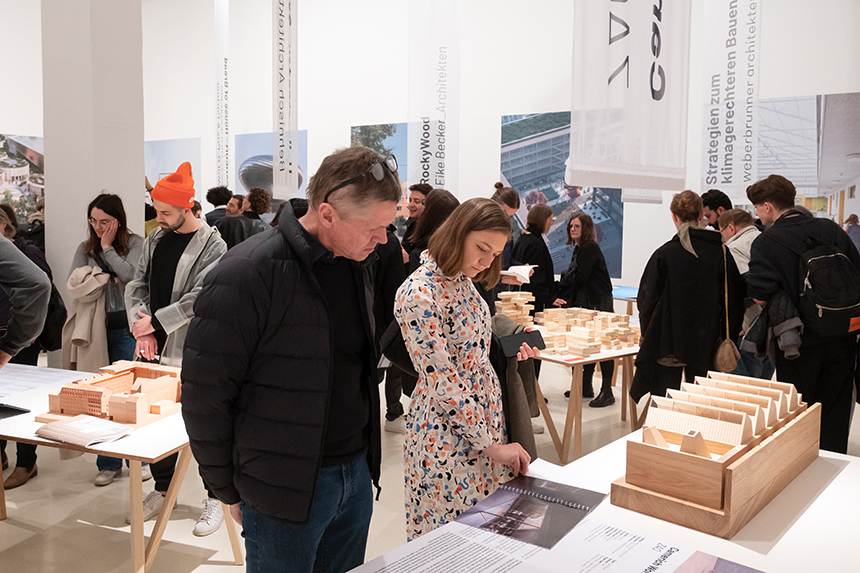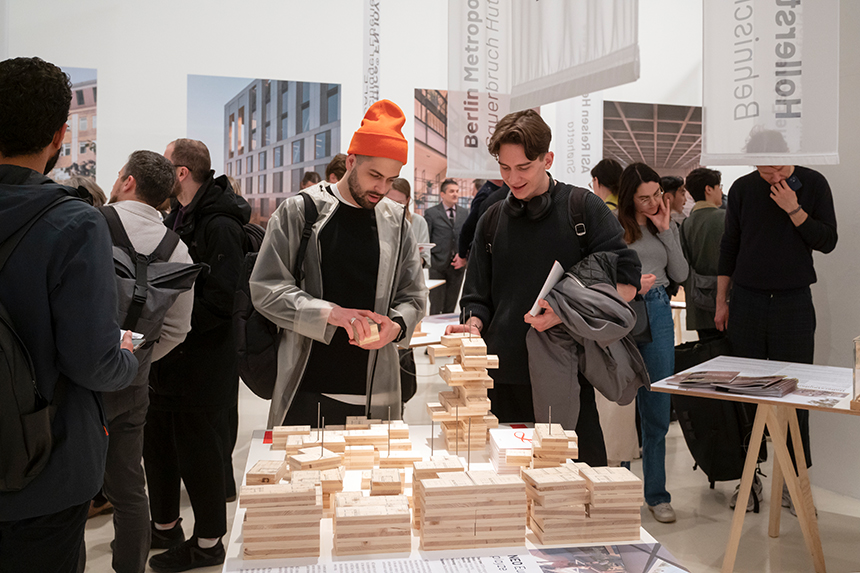In view of the climate crisis, wood has been experiencing a renaissance in the construction industry for several years. More and more clients and architects are turning to timber and hybrid timber construction also at all scales to conserve resources and reduce CO2 emissions. In addition to its flexibility, load-bearing capacity and prefabrication capabilities, timber offers advantages in terms of thermal insulation, health and aesthetics. The Wood's Up! exhibition at Aedes presents 16 realised and planned timber buildings of different typologies. Local structures, alternative financing models and ecological aspects play an important role in the selection of the international projects. The focus on sustainable hybrid timber construction also opens up perspectives for further new strategies and concepts for the future of this building material.
The exhibition's participating architectural firms
Arge ZRS Architekten Ingenieure & Bruno Fioretti Marquez, Berlin:
Residential building Holz Ziegel Lehm, Berlin, DE
Baumschlager Eberle Architekten & SCAPE, Lustenau/Paris:
Office building Green Office® ENJOY, Paris, FR
Behnisch Architekten, Boston, Munich, Stuttgart, Weimar:
Residential building Hollerstauden – Communal Living, Ingolstadt, DE
David Chipperfield Architects Berlin:
4G Wine Estate, SA
COOP HIMMELB(L)AU Wolf D. Prix & Partner, Vienna:
Museum PANEUM – House of Bread, Asten, AT
Eike Becker_Architekten, Berlin:
Office building RockyWood, Offenbach am Main, DE
Kaden⁺, Berlin:
New Extension Building to Apollonia von Wiedebach School, Leipzig, DE
Kéré Architecture, Berlin:
Kindergarten TU Munich, Munich, DE
LAVA – Laboratory for Visionary Architecture, Berlin:
Pavilion Deutscher Pavillon, EXPO 2025, Osaka, JP
NKBAK, Frankfurt am Main:
Kindergarten in Saarbrücken, Saarbrücken, DE
playze, Berlin/Basel/Shanghai :
Concept NEO, Europe
Sauerbruch Hutton, Berlin:
Berlin Metropolitan School, Berlin, DE
Snøhetta, Oslo/Innsbruck:
Office building ASI Reisen Headquarters, Natters, AT
TCHOBAN VOSS Architekten, Berlin/Hamburg:
Festival Hall of the Waldorf School in Magdeburg, Magdeburg, DE
weberbrunner architekten zurich & berlin:
Publication Strategien zum klimagerechten Bauen
ZAO, Beijing:
Camerich Workshop Space, Beijing, CN

Kéré Architecture: Kindergarten TU Munich, DE, © Kéré Architecture | Kaden+: New Extension to Apollonia von Wiedebach School, Leipzig, DE, © Bernd Borchard | LAVA – Laboratory for Visionary Architecture: Deutscher Pavillon, EXPO 2025 Osaka, JP, © LAVA – Laboratory for Visionary Architecture
For centuries, thousands of years, people have built cities out of wood. It is only in the last one hundred and fifty years or so that this tradition has been broken and reinforced concrete has largely replaced wood as a building material. Extremely versatile and considered indestructible, concrete became the material of architectural modernity, while wood fell into disrepute as a comparatively less durable and, above all, highly flammable material.

Snøhetta: ASI Reisen Headquarters, Natters, AT, © Christian Flatscher | Arge ZRS Architekten Ingenieure & Bruno Fioretti Marquez: Holz Ziegel Lehm, Berlin, DE, © Arge ZRS Architekten Ingenieure & Bruno Fioretti Marquez | Behnisch Architekten: Hollerstauden – Communal Living, Ingolstadt, DE © Meike Hansen, Archimage
But once again, the situation has changed: in order to protect our livelihoods, we urgently need to curb the rampant consumption of resources in construction and reduce the use of climate-damaging materials. Wood, as a renewable resource and natural CO2 reservoir, has come back into play. In recent years, architects, engineers, craftsmen and construction companies have found a variety of ways to meet the challenges of fire safety in multi-storey timber construction. Wood is back in the city! With the exhibition Wood's Up! – The Rise of Timber Construction, the Aedes Architecture Forum presents the state of the art with 16 current buildings and projects.

Baumschlager Eberle Architekten and SCAPE: Green Office® ENJOY, Paris, FR, © Cyrille Weiner | weberbrunner architekten zürich & berlin: Strategien zum klimagerechten Bauen, © Beat Bühler | ZAO: Camerich Workshop Space, Beijing, CN, © ZAO
Unlike in cities, timber construction never completely disappeared in the countryside. In some regions of southern Germany, but especially in Vorarlberg in Austria, the tradition of timber construction remained alive throughout the 20th century and was able to develop further. It is no coincidence that many of today's timber construction techniques were invented and brought to market by local craftsmen. Timber room modules from the Vorarlberg carpentry company Kaufmann Bausysteme, for example, can now be found in schools in Frankfurt am Main, hotels in Hamburg and a kindergarten in Saarbrücken as well as in parliament buildings in Berlin. Remarkably, however, the competition for ever taller timber buildings that has been observed in recent years did not begin in Austria or southern Germany, but in Berlin-Prenzlauer Berg with the construction of a residential building completed in 2008 for the architectural group Kaden + Klingbeil - the first seven-storey timber building in an urban context in Central Europe, which was presented at the Aedes exhibition WoodBuildWood in 2012. Timber construction rarely means that a building is made entirely of wood. Its use does not always make sense, not least from an economic point of view, as timber construction is still more expensive than purely conventional construction methods. As a result, “timber buildings” are usually mixed material constructions.

Eike Becker_Architekten: RockyWood, Offenbach, DE, © Eike Becker_Architekten | playze: NEO, Europe © playze | TCHOBAN VOSS Architekten: Festival Hall of the Waldorf School in Magdeburg, DE © TCHOBAN VOSS Architekten
Today, timber construction is no longer an architectural exoticism or the domain of a few specialists. The number of architectural practices working on timber projects is growing. Gone are the days when the focus was on overcoming the technical challenges of timber construction (especially fire safety). Today's solutions are well known. Timber construction is no longer a quality in itself. Instead, like conventional buildings, today's timber structures must be evaluated on the basis of their spatial, conceptual and architectural quality. Contemporary timber construction has come of age.
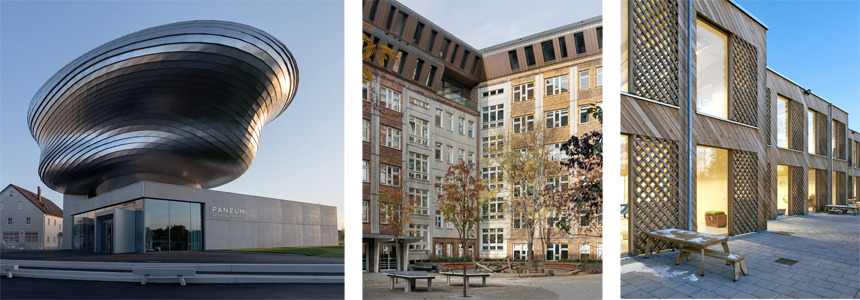
COOP HIMMELB(L)AU Wolf D. Prix & Partner: PANEUM – House of Bread, Asten, AT, © Markus Pillhofer | Sauerbruch Hutton: Berlin Metropolitan School, Berlin, DE, © Jan Bitter | NKBAK: Kindergarten in Saarbrücken, DE, © Thomas Mayer
Project Sponsor
Kaufmann Bausysteme

